#jigoro kano
Text

This Tai otoshi setup from Denis Vieru is so attractive...
Can't stop trying to get such "on the fly" grip and gake...
#judo#gif#martial arts#combat#sports#ippon#ko#tko#win#perfect#tai otoshi#denis vieru#ijf#kodokan#jigoro kano#athlete#moldavia#budo#budoblr
175 notes
·
View notes
Text
1. Carefully observe oneself and one’s situation, carefully observe others, and carefully observe one’s environment.
2. Seize the initiative in whatever you undertake.
3. Consider fully, act decisively.
4. Know when to stop.
5. Keep to the middle.
-- Jigoro Kano
6 notes
·
View notes
Text
1938 – Kanō Jigorō Date of Death.

Jigoro Kano (嘉納 治五郎, 10 December 1860[note 1] – 4 May 1938[3]) was a Japanese educator, athlete, and the founder of Judo.
0 notes
Text
A Brief History of Brazilian Jiu Jitsu
Brazilian Jiu Jitsu, also known as BJJ, is a martial art that originated in Brazil in the early 20th century. It is a grappling-based martial art that emphasizes techniques that allow a smaller, weaker person to defend themselves against a larger and stronger opponent.
BJJ has become increasingly popular in recent years, thanks in part to its effectiveness in mixed martial arts competitions, such…

View On WordPress
#bjj history#brazil#brazilian jiu jitsu history#gracie jiu jitsu#japan#jigoro kano#judo#jujutsu#mitsuyo maeda
0 notes
Text
El aporte de Sensei Kano Jigoro a las artes marciales
El aporte de Sensei Kano Jigoro a las artes marciales
Sin duda, el creador del Judo, Sensei Kano Jigoro, es el padre del concepto de arte marcial moderno vigente hasta nuestros días.
Más allá de aspectos de organización, el día de hoy quiero hablar de una de las mayores aportaciones del sensei en el arte marcial:
El modelo de enseñanza
Antes de la aparición del Judo, el modelo tradicional de enseñanza de las artes marciales era:
1. El maestro…

View On WordPress
0 notes
Text
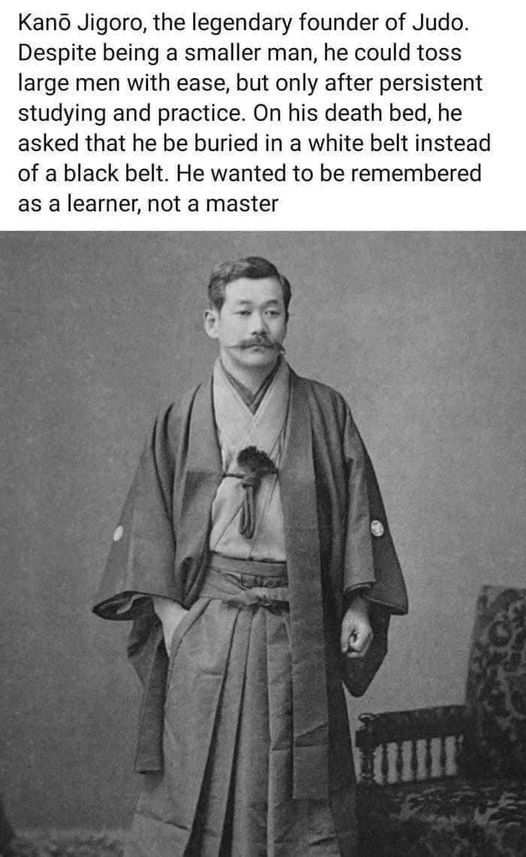
Behold, the master of Judo himself, Kano Jigoro! This legendary figure conquered the world with his incredible martial arts skills and revolutionized the world of combat sports. His dedication, hard work, and humility are reflected in every move of Judo, and it's no wonder why it remains a popular and sought after sport to this day!
Don't miss out on the opportunity to get to know the man behind the art of Judo. Take a closer look at this historic image of Kano Jigoro, and be inspired by his indomitable spirit.
Join us in celebrating the life and work of one of the most influential martial artists of our time!
86 notes
·
View notes
Photo

Yoshio Sugino Sensei
Jigoro Kano, the founder of judo, introduced Sugino to the Katori Shinto-ryu school of #kenjutsu in 1927. Sugino also started studying Yoshin Koryu under Genro Kanaya around this time. He met aikido's founder Morihei Ueshiba in the early 1930s, and studied aikido sufficiently to gain a teaching license and open an Aikikai-affiliated dojo by 1935. By the 1940s he was teaching kenjutsu, aikido, judo and naginatajutsu full-time.In 1953, Sugino was asked to provide sword instruction for the actors in Akira Kurosawa's film, Seven Samurai. Originally the work was shared between Sugino and Junzo Sasamori of the Ono-ha Itto-ryu, but Sasamori pulled out early in the filming due to teaching commitments abroad. Sugino's choreography for the sword-fights departed from earlier, Kabuki-influenced work and focussed on making the scenes as realistic as possible.
563 notes
·
View notes
Text
Passage 76
The living are soft and yielding;
the dead are rigid and stiff.
Living plants are flexible and tender;
the dead are brittle and dry.
Those who are stiff and rigid
are the disciples of death.
Those who are soft and yielding
are the disciples of life.
The rigid and stiff will be broken.
The soft and yielding will overcome.
The word translated here as ‘soft,’ in Chinese is róu (柔), which can also mean flexible, gentle, yielding. When combined with the character for the Tao or the Way, you get 柔道, which in Japanese is pronounced ‘Judo.’ Yes, Judo as in the martial arts style. It literally means, “the way of softness,” or “the way of yielding,” and was heavily influenced by Taoist philosophy and this passage in particular, partially through Jujitsu, which it was based off of (Jujitsu meaning “the art of softness”).
One of the main principles of Judo practice is ‘maximum efficiency, minimum effort,’ a conservation of energy based on being flexible and yielding to one’s opponent rather than trying to combat them directly. It’s more efficient to evade a punch than it is to block it. This was illustrated by the founder of Judo, Jigoro Kano, with the phrase “softness controls hardness.”
Indeed, in modern medicine we know that flexibility and suppleness is a sign of health in most body systems. Ancient Chinese scholars may not have known about hard arteries, but they could clearly see that bodies in general became stiffer and less agile with age. They related this concept, as this passage does, to the way that young plants are tender and become hardened with age. Flexibility, therefore, was a sign of youth, vigor, and life, while rigidity was a sign of illness and death.
After so many passages discussing the folly of fearing death, the return to the source, and death’s place as part of the natural cycles that we all must go through, we should also discuss why it is suddenly cast in such a negative light here. Taoist philosopher Derek Lin has a wonderful explanation for this: in this instance, death specifically represents the loss of possibility that comes with death. It is more to do with the Uncarved Block than resisting the natural ebb and flow of life. When someone is alive, there are endless possibilities and opportunities for growth. Once they are dead, their possibilities (specifically within the bounds of their life) are finished. Their block is carved.
As the Uncarved Block is used as a metaphor for indecision, though, this leads to an interesting thought: death as a final decision. To remain alive is to live in a perpetual state of indecision, not yet knowing what the whole shape of your life will be. Even the choices that you make in your life can be undone so long as you are living and yielding to new experiences.
In death, the sum of your choices, every one you’ve ever made, is finalized. Rigid.
7 notes
·
View notes
Text
My kny ocs because I want to share them to you :3
These are my two demon slayer ocs
They’re named Hikari and Suzuki 😸

The taller one is Hikari and the shorter one is Suzuki 😼
*AHEM*
Let’s start with hikari!
Name: Getsumei Hikari
Age: 480(??)
Species: hybrid
Rank: hashira
Birthday: 13/10
Breathing style: light breathing
Personality: kind, loyal, very friendly, funny, intelligent and a little bit sarcastic.
Fun facts!!: she actually loves cooking and learned a LOT of recipes in her lifetime. You could say she the Gordon Ramsay of the Taisho era 😸
She actually witnessed her parents getting killed by muzan but didn’t get caught for some reason. Idek why 😭
I forgot to mention that she has a demon form and can regenerate her limbs when they’re cut off.
And the reason why she has an eyepatch is because under it lies a special eye that she got from her demon mom! It looks like Ai Hoshino’s star eye from oshi no ko
She has a crush on Sanemi and will ask him out like every day and he’ll decline bluntly. So basically this is what their daily conversation would be like.
Hikari: morning Sanemi! I just wanted to ask you that will you date me??
Sanemi: no.
Hikari: I don’t care, you will date me one day.
I Made them get married tho.
Alright! Let’s move on to Suzuki!
Name: Kira Suzuki
Age: 14
Species: human
Rank: kanoe
Birthday: 23/5
Breathing style: thunder breathing
Personality: very intelligent, grumpy, kind, loyal and short-tempered
Fun facts!!: she was taken under jigoro’s wing after he found her in the forest alone when dawn was breaking.
She also has anger issues and sometimes hits people when she gets mad. So whenever Zenitsu or anyone was getting on her nerves she would normally hit them but always stops herself because she just wants to control this anger.
Can and will try and rizz up genya. (She doesn’t like him tho)
She always apologises to Zenitsu whenever she makes him cry.
Inosuke is her best friend.
Okay! I’m now done with this introduction!
I hope y’all have a nice day/night!
Goodbye!!
#kimetsu no yaiba oc#sanemi shinazugawa#genya shinazugawa#SANEMI AND ME IS CANON#kny oc#oc#chainsawman is so dope#zenitsu agatsuma#tanjiro kamado#kimetsu no yaiba#inosuke hashibira
3 notes
·
View notes
Text
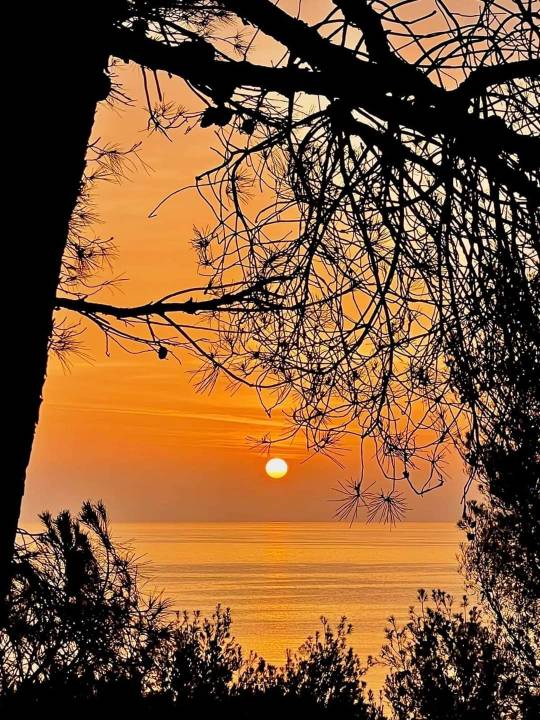
" A dualidade é a condição da vida.
Sem oposto nem contrastes, a vida
não é vida."
_____ Jigoro Kano
6 notes
·
View notes
Photo

Desde el año 2011 se conmemora cada 28 de octubre el Día Mundial del Judo. Fecha que se eligió ya que es el día de cumpleaños del creador de este arte marcial Jigoro Kano.
El objetivo principal de este día es hermanar a los judokas de todo el mundo, además de dar a conocer esta disciplina y los valores en los que se fundamenta, a todas las personas que estén interesadas en aprenderlo o simplemente sientan curiosidad sobre las artes marciales.
youtube
Valores que fomenta la práctica del judo
Todas las artes marciales son un camino de perfeccionamiento para el practicante, por lo tanto, no solo perfecciona el cuerpo y la mente, también te vuelven una mejor persona. En el caso de los judokas, los valores morales que deben interiorizar son los siguientes:
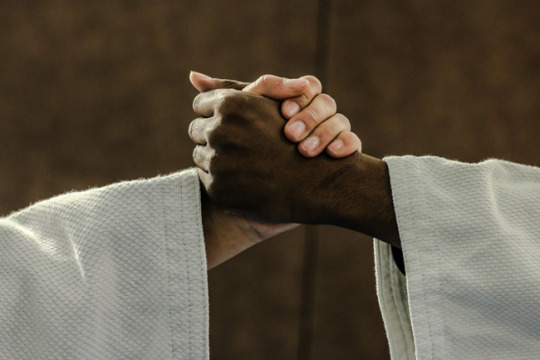
La cortesía: Representa el respeto a los demás, sin importar si en ese momento es un oponente.
El coraje: Se trata de hacer lo que es más justo.
La sinceridad: Decir lo que se piensa y siente, sin ningún tipo de máscaras.
El honor: Ser fiel a tu palabra y compromisos.
La modestia: Hablar de uno mismo sin orgullo, pero tampoco de manera lastimera.
El respeto: Ser digno de confianza.
Control de sí mismo: Desarrolla la inteligencia emocional y el autocontrol.
Amistad: Confraternizar con todo el mundo de forma pura.
La lealtad: Estar allí para otros y tenderle la mano.
La gratitud: Agradecer todo aquello que se recibe de forma correcta.
Las mejores series de anime sobre el judo
Judo Boy: Se trata de un anime japonés creado por Tatsuo Yoshida y dirigida por Ippei Kuri. La historia sigue las aventuras de Sanshiro, un adolescente estudiante de la Escuela de Kurenai Jiujitsu. Durante toda la historia busca al asesino de su padre, un hombre con un solo ojo.
Yawara!: Otro clásico del anime que se basa en el judo. Yawara Inokuma es una niña que aspira hacer las actividades de los otros niños. No obstante, ella tiene cualidades innatas para las artes marciales, por lo que su abuelo, Jigorou Inokuma, quiere convertirla en la próxima judoka estrella de la familia y hacerla competir en las olimpiadas de Barcelona 1992. Durante toda la historia ella siente repulsión por el judo, dado que es obligada a practicarlo, pero conforme pasa el tiempo ella llega apreciar este arte marcial y hasta disfrutarla.
Inakappe Taish?: Esta divertidísima serie cuenta la historia de Daizaemon, un joven que desea aprender judo y por eso viaja a la capital de Japón, Tokio, para entrenar con un amigo de su padre. Al llegar a la casa conoce es a la hija del sensei, Kikuko, de quien se enamora a primera vista y a su gato Nyanko, quienes se transforma en sus maestros. La historia cuenta con varios giros jocosos y un protagonista único que logra convertirse en un gran campeón.
¿Qué hacer el Día Mundial del Judo?
Puedes ir a una exhibición de este grandioso arte marcial, recibir clases (Una excelente idea si eres mujer y quieres aprender algo de defensa personal), ver algún anime sobre el tema o un documental sobre quién fue Jigoro Kano.
También te invitamos a compartir todo lo que aprendas en las redes sociales y etiquetarlo con el hashtag #DíaMundialdelJudo.
7 notes
·
View notes
Text
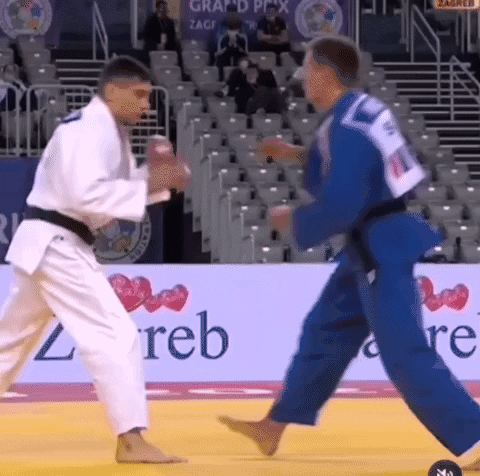
#judo#tai otoshi#denis vieru#moldavia#champion#ippon#lapel#grip#ijf#mma#martialarts#japanese#combat#sports#jigoro kano#kodokan#budo#throw#slam#grand prix#zagreb#black belt#gif#fight#athlete
34 notes
·
View notes
Text
Con base a la historia, el judo ha sido un arte marcial que implica el uso total del cuerpo, ya sea física o mentalmente. Es un deporte de combate que consiste en una lucha con fin de proyectar o derribar contra el suelo al contrario. Este arte marcial fue creada y fundada por Jigoro Kano en 1882. Su significado es ´´el camino hacia la suavidad y flexibilidad´´🥋💘
7 notes
·
View notes
Text
Jigoro Kano
#tatame #tatame4girls #jiujitsu #jiujitsulifestyle #jiujitsulifestyle #jiujiteiros #jiu #jiujitsuparatodos #papodejiujiteiro #jiujitsukids #jiujitsufemenino #jiujitsu4life
A vida de Jigoro Kano
Inicialmente, Jigoro Kano foi um estudioso e mestre de artes marciais japonesas, nascido em 28 de outubro de 1860, em Kobe, no Japão. Como resultado de seu trabalho, ele se tornou conhecido como o fundador do judô, uma arte marcial que se tornou uma das mais populares do mundo.
A formação de Kano
Kano cresceu durante o período de modernização do Japão, que viu o país se…
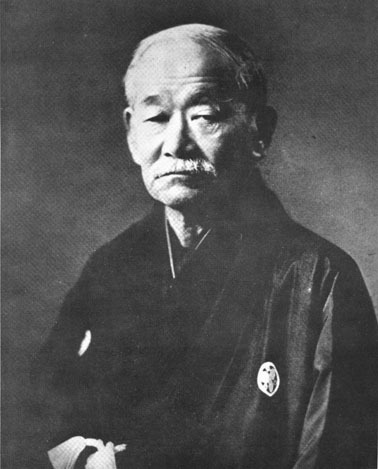
View On WordPress
2 notes
·
View notes
Text
O que é Karate-Do?

O Karate-do é o caminho da mão vazia. É uma arte marcial, mas também inclui uma filosofia e desenvolvimento pessoal. O karatê não se trata apenas de luta; trata-se também de auto-aperfeiçoamento e crescimento espiritual.
O Karate-do é uma arte marcial originária de Okinawa, Japão.
Significa "o caminho do karatê". Karate-do é uma palavra japonesa que se traduz para "mão vazia", enquanto a palavra "caminho" significa "caminho" ou "caminho".
No Ocidente, o karatê é muitas vezes referido erroneamente como karate-jutsu ("a arte das mãos vazias"). Este termo foi cunhado por Jigoro Kano, que fundou o judô - uma arte marcial baseada nos princípios do jujitsu - e mais tarde o usou ele mesmo para nomear seu próprio sistema de estudo: Judô Kodokan. Hoje, muitos estilos de artes marciais usam este termo japonês para suas disciplinas; entretanto, ele não deve ser confundido com outros usos, como no judô e na luta de sumo (ambos usam o jutsu de sumo).
A diferença mais significativa entre o karatê e outros sistemas tradicionais de luta asiáticos reside não tanto em suas origens ou técnicas, mas sim em sua base filosófica. Em contraste com a filosofia oriental que sustenta que todo ser humano tem uma conexão espiritual inata com a natureza e Deus/Deusa/Tudo que Is/etc., a cultura okinawana tende ao individualismo: Os okinawanos se orgulham da dureza e autoconfiança em vez de compaixão pelos outros.
A palavra karate-do significa mão vazia ou desarmada.
Karatê significa mão vazia ou desarmada e significa "caminho". Karate-do é o caminho do karatê. A palavra karatedo simboliza que não há separação entre mente e corpo nesta arte marcial. Não se pode separar um do outro porque eles estão trabalhando juntos como uma unidade.
https://www.youtube.com/watch?v=K_fsxlDoxCw
A palavra "fazer" significa "caminho" ou "caminho".
É um sufixo que é usado em muitas artes marciais e práticas religiosas. No caso do karatê, foi adaptado de uma palavra chinesa que significa "mão vazia" ou "caminho da mão vazia".
O karatê-do é uma arte marcial.
O Karate-do é uma arte marcial japonesa. É um sistema de autodefesa e um modo de vida que enfatiza tanto o desenvolvimento mental, moral e espiritual quanto a técnica física. Como o karate-do se concentra na luta com armas ou com as próprias mãos, ele também é conhecido como combate desarmado ou luta com as mãos vazias.
O karatê-do é uma arte marcial, o que significa que ele se concentra nas técnicas de combate. Tem também aspectos espirituais, filosóficos e éticos que ajudam os estudantes a desenvolver seu caráter, bem como sua força física e aptidão física.
Read the full article
2 notes
·
View notes
Text
El Desarrollo de la Lucha en el Piso en el Judo
El Desarrollo de la Lucha en el Piso en el Judo
Parte 2
Hubo una escuela, que gracias a su excelente trabajo de piso derrotó al Kodokan en un gran número de encuentros, me refiero a la Fusen Ryu, del sensei Mataemon Tanabe.
Tanabe fue sin duda uno de los mayores exponentes del Jujutsu de finales del Siglo XIX y principios del XX y sobre todo del Newaza:
寝技 “Lucha en el piso ”
Stevens nos cuenta, que en una ocasión, en Osaka, Tanabe retó a…

View On WordPress
1 note
·
View note